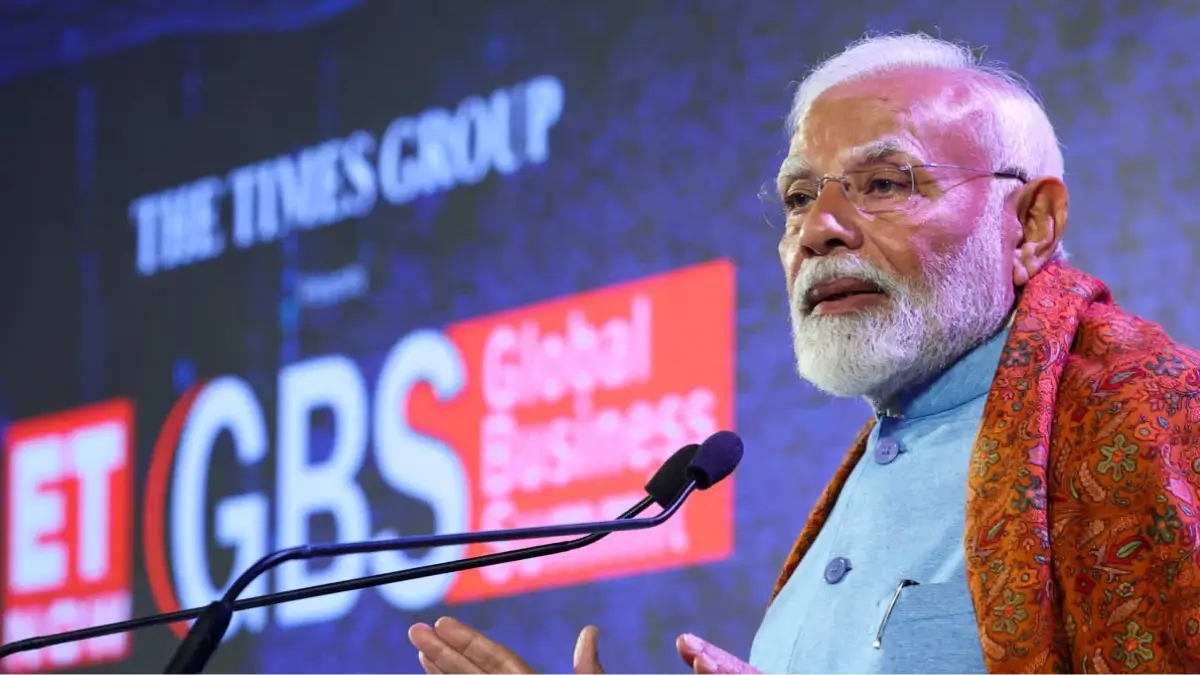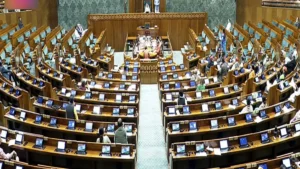Prime Minister Narendra Modi announced the formation of a Deregulation Commission aimed at reducing the role of the state in governance. Speaking at the ET Now Global Business Summit, Modi emphasized the government’s commitment to eliminating bureaucratic hurdles and promoting ease of doing business. This move aligns with the broader vision of transforming India into a more business-friendly and efficient economy.
Formation of the Deregulation Commission
The Deregulation Commission will focus on eliminating unnecessary regulations and simplifying governance structures. Modi stated that the government has already removed hundreds of outdated compliances and, through the implementation of Jan Vishwas 2.0, aims to further reduce archaic rules that hinder businesses.
Key Objectives of the Deregulation Commission:
- Minimizing government interference in business and economic activities.
- Enhancing ease of doing business by reducing bureaucratic hurdles.
- Eliminating obsolete regulations that slow down governance.
- Encouraging private sector participation in India’s development.
Boosting Private Sector Participation in Economic Growth
Acknowledging the crucial role of the private sector in India’s journey toward becoming a developed nation (Viksit Bharat), the Prime Minister highlighted the government’s efforts to open up key industries such as:
- Nuclear energy
- Space exploration
- Commercial mining
- Power distribution
These reforms aim to bring efficiency, attract investments, and position India as a leader in the Fourth Industrial Revolution.
Property Rights Reform: The Svamitva Yojana
Modi emphasized the need for property rights reforms as a means to reduce poverty and unlock economic potential in rural areas. The Svamitva Yojana, launched on April 24, 2020, on National Panchayati Raj Day, aims to provide legal documentation for properties in village Abadi areas.
Key Highlights of the Svamitva Yojana:
- Utilization of drone and GIS technology to survey and map land parcels.
- Legal property rights granted to villagers, unlocking assets worth ₹100 lakh crore.
- Enhanced access to bank loans for rural property owners.
- Reduction in property disputes through accurate land demarcation.
- Village-level planning and economic transformation through structured land ownership.
So far, 3 lakh villages have been surveyed under this scheme, and 2.25 lakh property cards have been distributed, allowing rural citizens to use their property as collateral for credit access.
Performance-Oriented Politics and Economic Transformation
Modi highlighted the shift towards performance-driven politics, asserting that people now demand results from their leaders. Comparing the present government’s initiatives to the previous UPA administration, he pointed out key achievements:
- 25 crore individuals lifted out of poverty, creating a new Neo-Middle Class.
- Increase in zero-tax threshold from ₹7 lakh to ₹12 lakh, providing relief to the middle class and boosting economic activity.
- Enhanced government sensitivity towards citizen needs, leading to a more inclusive and growth-oriented policy framework.
Strengthening the Banking Sector
The Prime Minister addressed the revival of India’s banking sector, which was in crisis a decade ago due to high Non-Performing Assets (NPAs) and limited access to credit. The government adopted a three-pronged strategy:
- Banking the Unbanked – Expanding financial inclusion through schemes like Jan Dhan Yojana.
- Securing the Unsecured – Strengthening financial stability and deposit security.
- Funding the Unfunded – Ensuring easy access to credit for small businesses and entrepreneurs.
Success of the Mudra Yojana:
- ₹32 lakh crore disbursed to small businesses and individuals.
- Increased profitability of public sector banks, recording profits of ₹1.25 lakh crore in just nine months of the current fiscal year.
- Systemic banking reforms that have improved financial stability and credit access.
India’s Economic Growth and Future Prospects
Reflecting on India’s economic journey, Modi criticized the slow pace of reforms under the previous Congress-led UPA government. He attributed India’s rise as the fifth-largest economy to the reform revolution initiated in 2014. Expressing confidence in India’s trajectory, he declared that India will soon become the third-largest economy in the world.
Justice Reforms: Implementation of Bharatiya Nyaya Sanhita (BNS)
Modi emphasized that delays in justice delivery have long plagued India. To address this, the government has implemented Bharatiya Nyaya Sanhita (BNS), a comprehensive legal reform replacing outdated colonial-era laws.
Key Impacts of BNS:
- Faster legal proceedings and reduction in case backlogs.
- Stronger legal framework for protecting citizens’ rights.
- Greater efficiency in justice delivery with modernized laws.
Summary of Key Developments
| Aspect | Details |
|---|---|
| Deregulation Commission | Aims to minimize government interference in business and governance. |
| Objectives | Reduce bureaucratic hurdles, eliminate obsolete regulations, and encourage private sector participation. |
| Jan Vishwas 2.0 | Initiative to remove archaic rules hindering businesses. |
| Private Sector Participation | Government opening sectors like nuclear energy, space exploration, commercial mining, and power distribution. |
| Svamitva Yojana | Property rights reform using drone and GIS technology to provide legal documentation to rural property owners. |
| Impact of Svamitva Yojana | Unlocks assets worth ₹100 lakh crore, reduces property disputes, and enhances access to bank loans. |
| Performance-Oriented Politics | Focus on economic transformation and governance efficiency, helping 25 crore people rise out of poverty. |
| Income Tax Relief | Zero-tax threshold raised from ₹7 lakh to ₹12 lakh to support the middle class. |
| Banking Sector Reforms | Strategies to improve financial inclusion, banking stability, and credit access. |
| Mudra Yojana Impact | ₹32 lakh crore disbursed to small businesses; public sector banks recorded ₹1.25 lakh crore profit in nine months. |
| Economic Growth | India is currently the fifth-largest economy and is projected to become the third-largest soon. |
| Justice Reforms (BNS) | Bharatiya Nyaya Sanhita implemented to modernize laws, reduce case backlogs, and improve legal proceedings. |



 Viksit Bharat G RAM G Bill Passed in Lo...
Viksit Bharat G RAM G Bill Passed in Lo...
 Bharat Taxi to Roll Out in January 2026 ...
Bharat Taxi to Roll Out in January 2026 ...
 Overall LFPR Show Upward Momentum as Une...
Overall LFPR Show Upward Momentum as Une...







